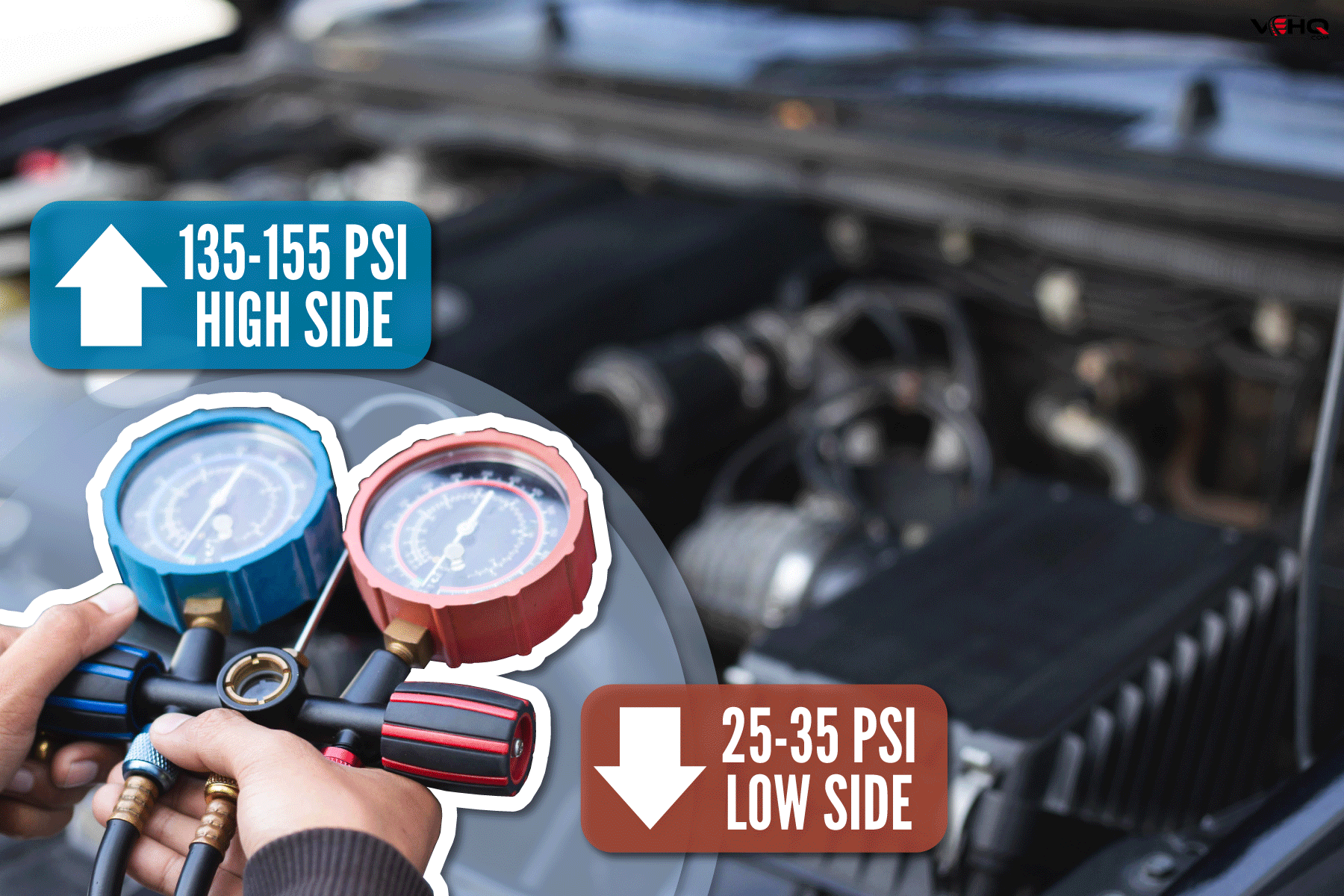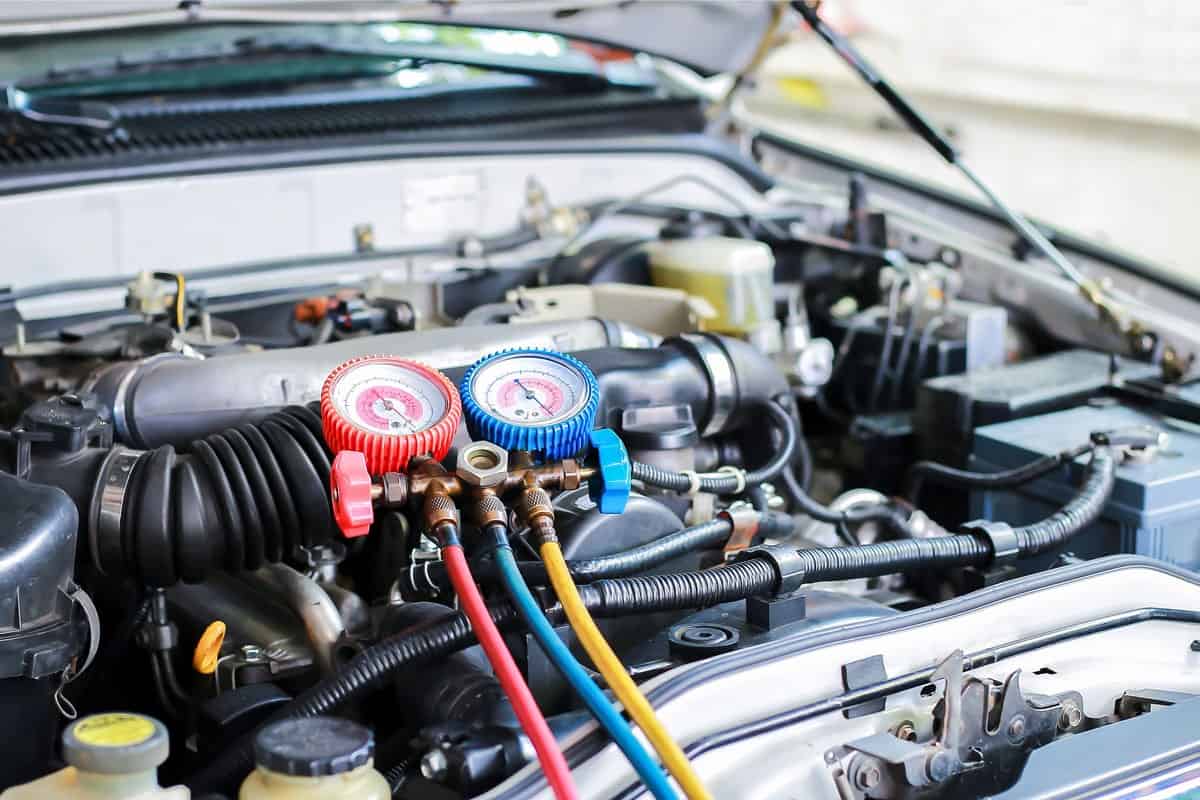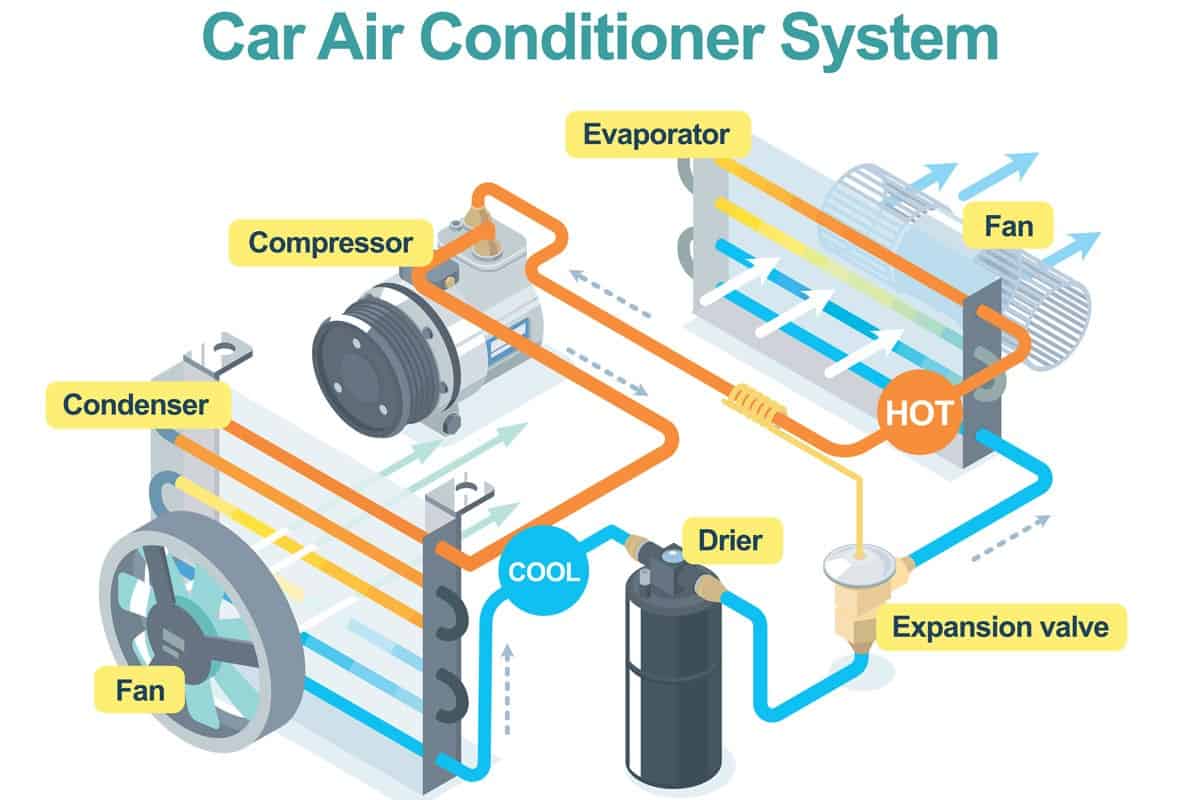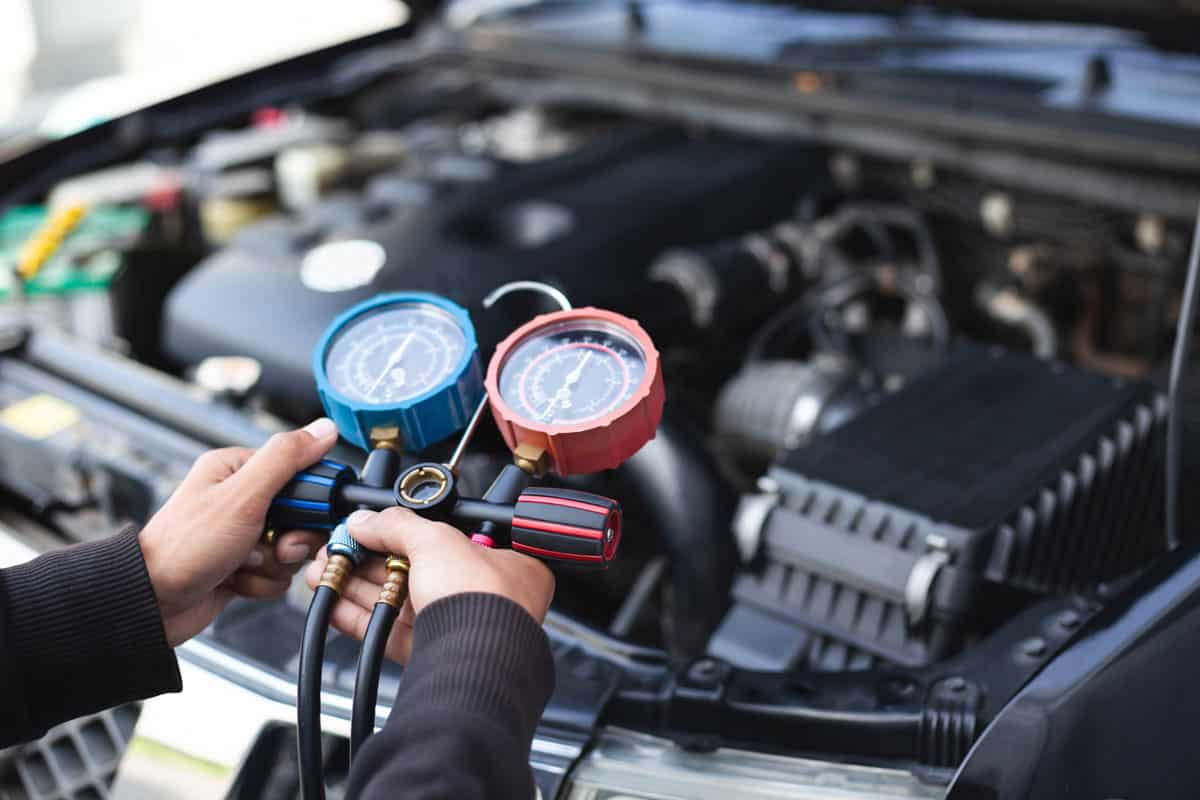Your A/C system helps cool your car during long rides, but it can overcharge from time to time. When this happens, you can check the gauge readings to see if the AC system is in the right range. In this post, you will learn what overcharged A/C system readings are and their appropriate values based on our research.
An overcharged A/C system gauge reading is 250 PSI/50 PSI. This means that the system is not cooling due to too much refrigerant. A leak inside could be preventing the cooling process. The normal pressure of an A/C system should be 150 PSI/30 PSI.
The right amount of refrigerant can help maintain an A/C system's functions. If you are aiming for normal pressure, you need to know the symptoms of an overcharged A/C system and its primary components. Continue reading to find out more about gauge readings and the A/C system.

How To Interpret An Overcharged A/C System Gauge Reading
An overcharged A/C system gauge reading tells you that there is a problem with the cooling process of the vehicle.
If you have an overcharged A/C system, the gauge reading will be at 250 PSI/50 PSI. That means the condenser is not cooling properly. A blockage may be preventing the condenser from operating.
The main reason an A/C system can overcharge is excess refrigerant. In this case, there is probably a leak in the system. You should put in the right amount of refrigerant or let a professional do it for you.
There are different variants of refrigerants, so the gauge readings will vary slightly.
The normal pressure for an A/C System ranges from 135-155 PSI on the high side and 25-35 PSI on the low side.
Moreover, you will get a high reading on both the low- and high-pressure gauges if you have an overcharged A/C system.
Other A/C System Gauge Readings

For other problems, refer to the following readings and the corresponding interpretations:
- 250 PSI/30 PSI – Some unwanted air is inside the system.
- 225 PSI/80 PSI – The expansion valve is possibly open wider than normal, which means that the system takes loads of refrigerant.
- 200 PSI/70 PSI – The A/C system is blocked.
- 150 PSI/30 PSI – Water is present in the system.
- 150 PSI/ >10 PSI – The expansion valve is open, or the A/C system is leaking.
- 125 PSI/30 PSI – There compressor has too much oil, or the system is uncharged.
- 50 PSI/50 PSI – The clutch does not engage.
- When your engine is off, the lower A/C pressure should be 25 PSI to 40 PSI, while the high side should be about 200 PSI.
You can check the range and temperature values if your car uses an R-134a refrigerant.
Symptoms Of An Overcharged A/C System

Aside from the readings, you should also be aware of the other signs of an overcharged system. Below are some symptoms to look out for:
Abnormal Pressure Readings
Unusually high A/C pressure and temperature readings are signs of an overcharged system. This can result in AC failure as the compressor strains to maintain balance within the system.
Inadequate Cooling
As the primary telltale sign, inadequate cooling occurs when the space to depressurize the coolant does not exist. When this happens, in some vehicles, the AC can automatically shut itself down to prevent further problems with the system.
Noise From The Compressor
A/C compressors have a bypass system that guards against straining the pump due to extreme internal pressure.
When it makes a noise like the screeching of a wild animal, the sound indicates that the compressor is having a hard time handling the liquid coolant.

Broken Compressor
This problem is a result of chronic overcharging. Eventually, the internal seals will stop working, and the valves and pump will cease to operate.
Hot Air Coming From The Air Vents
When you encounter this issue, take your car to a repair shop and have it checked by professionals. They have the appropriate tools to fix the problem.
Also, refrigerant chemicals used for A/C charging are hazardous and should not be handled by untrained individuals.
Engine Failure
The A/C compressor can consume a large amount of engine power. The power can result in the A/C compressor drive belt slipping and squealing.
The belt can snap or steal additional power from the engine. When this is the case, you might notice fluctuations in idle power and acceleration.
Can An Overcharged A/C System Damage Your Car’s Compressor?
An overcharged A/C system can cause permanent compressor failure. There will be a problem if you overfill the system with refrigerant. The compressor will produce more liquid coolant instead of gas.
The compressor is vital for a car's A/C system because it does the following:
- Compresses the refrigerant throughout the A/C system
- Makes air cool as it circulates
- Maintains the right pressure for the refrigerant to activate
How Does Refrigerant Affect The A/C System?
A vehicle's AC uses refrigerant to provide cool air. Commonly referred to as freon, it is a chlorofluorocarbon (CFC) that transforms hot air into cold air. This process involves the absorption and release of heat.
If you have excess refrigerant to remove, you will need to use an AC recovery machine. Venting the refrigerant is illegal.
Click here to see this product on Amazon.
How Does A Car's Air-Conditioning System Work?

A car’s A/C system works with the refrigerant. As the refrigerant changes from liquid to gas, hot, humid air from the vehicle circulates, and the A/C system releases dry, cold air.
Controlling the pressure and temperature of the A/C system enables the refrigerant to change from liquid to gas.
If you want to dive in and learn more about the A/C system, you can read about the components below.
Primary System Components
If you know the main components, you will be better able to diagnose problems with the A/C system. These problems can affect gauge readings and system efficiency.
Drier/Receiver
Found in vehicles with a thermal expansion valve, this component separates gas and liquid so that the liquid is contained and does not penetrate the compressor.
The drier/receiver filters contaminants between the condenser and the metering device. It also dries the refrigerant by eliminating water with a drying agent, removes moisture in the system, and traps debris.
Condenser
This part lowers the refrigerant’s temperature while maintaining high pressure to the system by using forced air (fan or outside air slipstreaming in) in shifting heat.
Compressor
Located at the front of the engine, the compressor serves as the heart of the A/C system. It is the main power unit separating the low-pressure side from the high-pressure side.
Accumulator
This part serves as storage for refrigerant to keep the refrigerant from entering the compressor and harming it. It also filters debris, gets rid of moisture in the system, and controls the amount of refrigerant going into the evaporator.
Compressor Clutch
This component signals the compressor to turn on or off for the freon. As a result, the A/C system gets the correct pressure for the condenser. Afterward, it delivers the refrigerant to the evaporator, where chilling begins.
Evaporator
Located behind the dashboard, it evaporates the refrigerant into gas and creates cool air. It will start the cold air flow out of your A/C vents.
Clutch Cycling Switch
This switch controls the temperature within the evaporator core. It prevents the evaporator temperature from dropping further to a specific level. If the temperature is too low, it can freeze the entire core.
In Closing

Overcharged A/C system readings tell you if the pressure is in the normal range. The pressure should be between 135-155 on the high and 25-35 on the low side. With an overcharged A/C, the reading is 25o PSI on high and 50 on low.
You should familiarize yourself with the gauge readings and their interpretations to keep your A/C system running correctly.
You can learn more from these related posts:

